Last Updated on July 7, 2024 by Max
Introduction
Welcome back to our ongoing investigation of cold therapy‘s journey. If you’ve been following our previous posts about the testosterone-boosting effects of cold plunges and the role of cold in cancer treatment, you know that we’ve been discovering some pretty remarkable ways cold exposure affects our health. Today, we’ll explore how our ancestral battle with the cold may shape the future of cancer therapy.
Our ancestors faced harsh, icy conditions without the modern comforts we enjoy. This constant battle with the cold played a crucial role in shaping our bodies, particularly in how we developed brown fat, a special kind of fat that generates heat. Fast forward to our times, and scientists are discovering something unbelievable: this same brown fat helps us in our fight against cancer. In this exploration, we’re diving into recent research that shows how activating brown fat by simply getting cold could be a new way to tackle cancer.
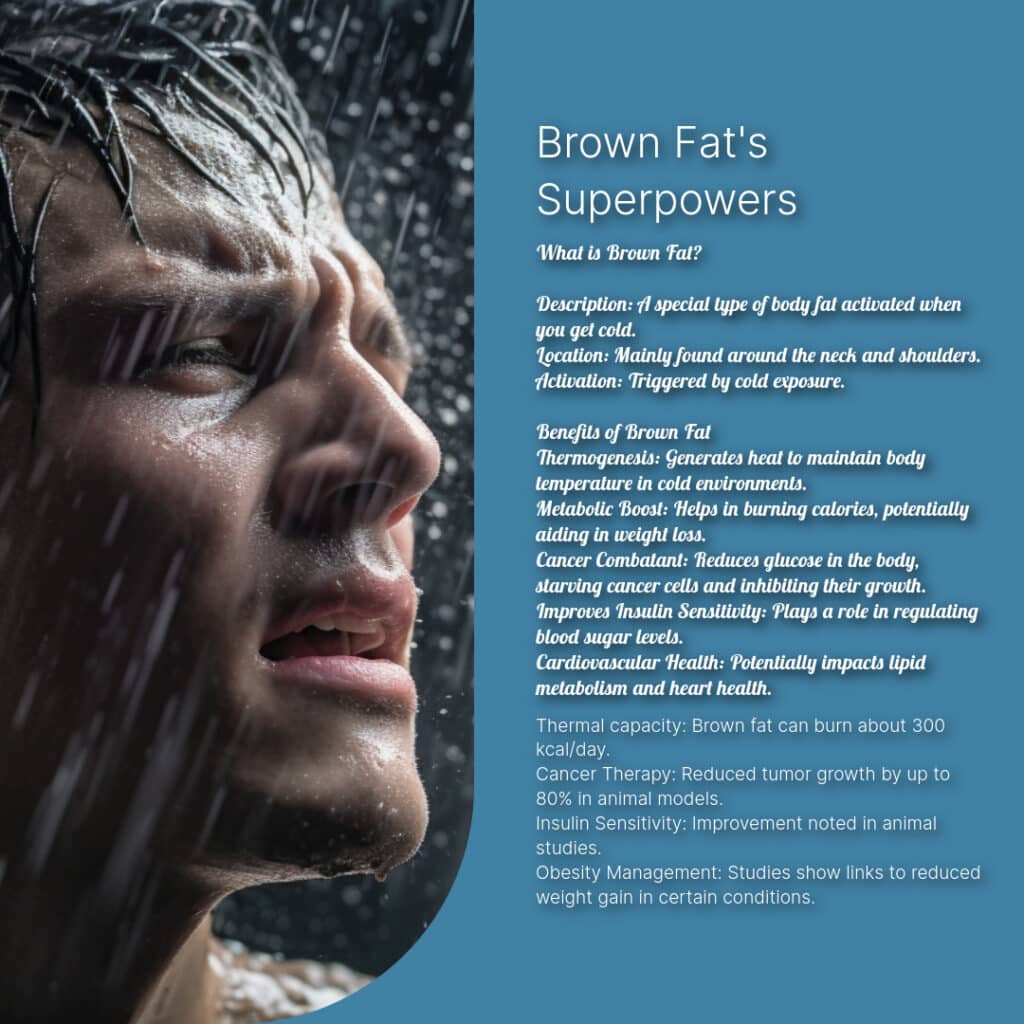
So, let’s start this journey together.
Brown Fat: Nature’s Cozy Furnace Inside Us
Have you ever wondered why we don’t turn into human popsicles in chilly weather? The secret lies in a remarkable type of fat called brown adipose tissue (BAT), or brown fat. Now, this isn’t your ordinary fat. Unlike white fat, which is the couch potato in the world of body fat, storing energy, and padding our waistlines, brown fat is the energetic gym enthusiast. It’s a natural furnace inside us, burning calories not for building muscles, but for generating heat – a lifesaver in cold conditions.
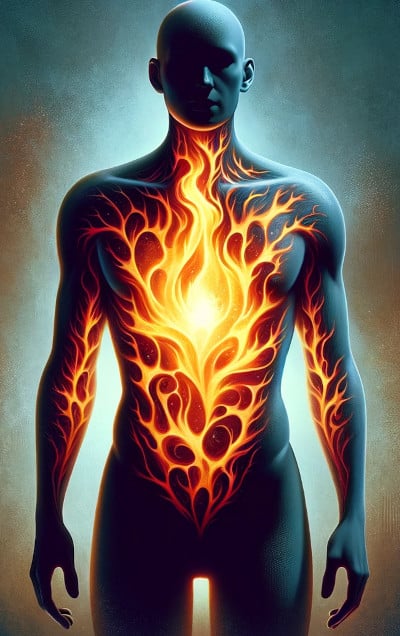
So, why is brown fat… well, brown? Brown fat is packed with mitochondria, those tiny powerhouses inside our cells, which contain iron. This iron gives brown fat its characteristic brownish hue. It’s like having tiny, iron-rich, heat generators scattered throughout our body. Where do you find this superhero fat? Brown fat is like an exclusive club with specific locations in the body. It’s primarily nestled around the neck and shoulders, and it plays a crucial role in maintaining our body temperature. It’s our body’s way of turning on the central heating when things get frosty.
But here’s a twist: not all of us have the same amount of brown fat. People living in colder climates, like the Nordic countries, tend to have more brown fat compared to those in warmer areas. It’s nature’s way of adapting our bodies to our environment. Just like a polar bear has a thick fur coat, humans have developed more brown fat as a natural defense against the cold. And if you’re wondering whether you lose this fantastic fat as you age, the answer is yes, unfortunately. As we grow older, our stores of brown fat tend to decrease. This might explain why we often feel colder as we age and why managing body temperature becomes a bit more challenging.
This brings us to an intriguing point in our discussion: could the power of brown fat be harnessed in the fight against diseases like cancer? It’s not just about staying warm anymore; it’s about turning up the heat on cancer cells. The research in this area is heating up, revealing how this ancient tool for survival could be repurposed for modern medical miracles.
The Heat is On: Brown Fat in the Scientific Spotlight
Recent scientific studies show how brown fat can be a weapon against cancer. One such study that stands out is by Seki et al. (2022), which has attracted significant attention for its innovative approach and striking results. In this study, the researchers focused on understanding how the activation of brown fat affects cancer growth. Their method was straightforward yet effective: they examined the impact of lowering the body’s temperature, a trigger for brown fat activation, and observed how this influenced cancer cells. They used tolerable cold exposure: a mildly cold ambient temperature of 16°C for 2-6 hours per day over a consecutive 14-day period. This exposure led to the marked activation of BAT in key areas of the body. The degree of BAT activation varied among individuals, but significant activation was noted in both male and female participants.
What they found was nothing short of remarkable. The activation of brown fat led to a significant decrease in the availability of glucose in the body. Why is this important? Because glucose is the primary fuel that cancer cells rely on to grow and multiply. By reducing glucose levels, brown fat essentially starves the cancer cells, inhibiting their growth. This finding is a game-changer. It suggests that something as simple as activating brown fat – which can be achieved through exposure to cold – has the potential to slow down or even halt the progression of cancer. This research opens up new ways for cancer treatment, offering a novel approach that could be used alongside traditional therapies.
Moreover, Seki et al. discovered that cold exposure led to approximately an 80% inhibition in tumor growth in colorectal cancer (CRC) mouse models. This was accompanied by changes in the tumor microenvironment, including improvements in hypoxia and reductions in tumor microvessel density. Most notably, the survival of CRC tumor-bearing mice was nearly doubled under cold conditions compared to thermoneutral conditions. These results underscore the importance of brown fat activation in combating cancer. The study reveals that this natural body response to cold not only affects metabolic processes but also has a direct impact on tumor growth and survival rates.
Let’s move on to the next study, where researchers Xu et al. (2023) have made a significant discovery about the power of brown fat, particularly when it’s activated by cold. Their study dives into the role of brown fat in controlling sugar levels in our body, a critical aspect of our overall health. The team found that when we are exposed to cold temperatures, our brown fat kicks into high gear. It starts using up sugar at a rapid rate to generate heat and keep our body warm. This process is vital for surviving in cold environments.
But here’s the twist: as brown fat consumes sugar, it also sends special signals to the liver. These signals, which are like tiny biological messengers, tell the liver to produce more sugar. This is a clever move by the body to ensure that while brown fat is using up sugar for heat, the liver replenishes it, keeping our sugar levels balanced.
So, what does this mean for us? It shows how our body has a remarkable way of adapting to different conditions. When it’s cold, our brown fat not only helps to keep us warm but also cleverly communicates with the liver to manage our sugar levels. This finding is a big deal because it uncovers a new and important way our body works to stay healthy.
How Does This Chill Factor Fight Cancer?
The intriguing interplay between cold exposure and cancer inhibition centers around a simple yet profound concept: cancer cells are glucose gluttons. This is where brown fat steps into the spotlight. When we activate brown fat, typically through exposure to cold, it acts like a glucose sponge, soaking up the sugar in our bloodstream. This process is pivotal because glucose is akin to fuel for cancer cells – it’s what they consume voraciously to grow and multiply. By engaging brown fat, we’re essentially diverting this essential fuel away from cancer cells.
A study by Xu et al. (2023) in Nature Communications illustrates this dynamic. Their research reveals that when brown fat is activated by cold, it doesn’t just passively use glucose. Instead, it actively engages in a sort of molecular warfare against cancer. The study found that brown fat releases certain particles – think of them as tiny messengers – that travel to the liver and signal it to produce more glucose for itself, thereby reducing the amount available in the bloodstream for cancer cells.
But here’s the kicker: these particles from brown fat contain specific microRNAs (miR-378a-3p), a type of genetic regulator. These microRNAs instruct the liver to ramp up its own glucose production, which seems counterintuitive. However, this newly produced glucose is primarily used by the liver and other essential organs, not by cancer cells. So, in essence, brown fat tricks the body into a state where less glucose is available for cancer cells. In summary, by activating brown fat through cold exposure we’re triggering a complex, systemic response that outsmarts cancer cells. The cold literally changes the playing field, making it harder for cancer cells to thrive.
Prostate Cancer and Brown Fat: Prostate cancer cells, unlike many other cancer types, can adapt to use fats as an energy source. This adaptability could potentially lessen the effectiveness of brown fat activation in starving prostate cancer cells of their energy source. However, a crucial aspect of brown fat activation is its ability to alter the metabolic environment in the body. Changing the availability and utilization of different energy sources could potentially influence even those cancer cells that prefer fats over glucose. This requires more specific research focused on the interaction between brown fat activation and prostate cancer’s unique metabolism.
Beyond Cancer: Brown Fat’s Other Superpowers. Insulin Sensitivity
The superhero-like qualities of brown fat extend well beyond its role in combating cancer. This unique type of fat in our body is stepping into the spotlight for its potential to enhance insulin sensitivity, aid in weight management, and improve cardiovascular health. A study led by Kurita et al. in 2019 reveals insulin sensitivity improving capabilities of brown fat. Insulin resistance is a condition where the body’s cells become less responsive to insulin, leading to higher blood sugar levels and often serving as a gateway to type 2 diabetes and metabolic syndromes. The research dives into how brown fat cells interact with our body’s insulin response, shedding light on a pathway that could revolutionize our approach to managing blood sugar levels.
The research focuses on a specific pathway known as the CXCL12-CXCR4 axis, involved in activating brown fat cells. These cells, when activated, play a significant role in how our body processes glucose – the sugar that our cells use for energy. What makes this finding so compelling is its potential application in real-world health scenarios. For individuals grappling with insulin resistance, this discovery opens up new avenues for treatment. This means more effective ways to control blood sugar levels, leading to better health outcomes for millions.
Brown Fat’s Role in Weight Management
Imagine brown fat as a secret weapon in the battle against weight gain. A study by Lomax et al. in 2019 shows how this special type of fat in our body can be a key player in managing weight. The study focused on a protein called UCP3, which is closely linked to brown fat and its functions. In simpler terms, UCP3 is like a tiny engine in brown fat cells that helps burn calories. The researchers observed rats that lacked this protein and found something remarkable. Even when these rats were fed a high-fat diet, they didn’t gain as much weight as expected. Moreover, their bodies maintained a good level of insulin sensitivity. This means their bodies could efficiently use insulin to manage blood sugar levels, which is crucial for overall metabolic health.
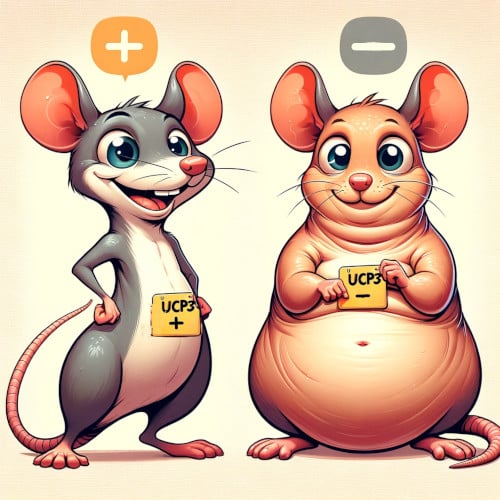
Additionally, the absence of UCP3 resulted in less ‘whitening’ of brown fat. Normally, brown fat can start to resemble white fat – the typical fat that stores energy and contributes to weight gain – under certain conditions. However, in these rats, their brown fat stayed ‘brown,’ meaning it remained active in burning calories.
What does all this mean for us? Essentially, the study by Lomax et al. ([Lomax et al.](Link to study)) points to the exciting possibility that activating brown fat in our bodies could help in weight management. It suggests that by keeping our brown fat active, perhaps through specific proteins like UCP3, we will be able to control weight gain more effectively, even under a diet that’s higher in fat. This discovery isn’t just about losing weight; it’s about understanding a new way our bodies can handle the calories we consume. It shows us that brown fat is more than just an inert mass; it’s a dynamic player in our body’s energy management system.
Brown Fat’s Influence on Heart Health and Blood Lipids
Consider a study by Hong et al. that explored the effects of inhaling fennel essential oil on obese rats. This study sounds unrelated to brown fat at first glance, but it offers valuable views into lipid metabolism – the way our bodies process fats – which is closely linked to brown fat’s function.
The findings from this study were quite striking. The obese rats, after being exposed to fennel essential oil for seven weeks, showed several health improvements: their body and visceral fat levels dropped, and there was a notable decrease in cholesterol and triglyceride levels. These changes are crucial because high levels of these fats can lead to heart disease. Furthermore, the rats also showed reduced insulin levels, indicating better blood sugar control, along with lower systolic blood pressure and pulse rate, both critical markers of cardiovascular health.
Now, how does this relate to brown fat? Well, brown fat is known for its ability to burn calories and regulate body temperature. But its role doesn’t stop there. It also influences how our bodies handle fats and sugars, directly impacting our overall metabolic health, which includes lipid metabolism and cardiovascular well-being.
The study by Hong et al. indirectly underscores the potential of brown fat in promoting heart health. By improving the way our bodies process fats, brown fat can help reduce the risk of heart disease, lower bad cholesterol levels, and maintain healthy blood pressure.
Tapping into Brown Fat’s Powers: A Guide for the Brave and Bold
The idea of activating our brown fat, much like gearing up a superhero, is intriguing, isn’t it? You might be wondering, “How can I awaken this inner power?” The key could be something as simple, yet challenging, as exposing ourselves to the cold. Imagine stepping into a cold shower, taking a dip in a chilly lake during winter, or even trying out cryotherapy – where your body is exposed to extremely cold temperatures for several minutes.
Brown Fat Activation Tips: A Beginner’s Guide
So, you’re ready to start your own journey towards activating your brown fat – that’s great! Here’s a step-by-step guide to help you begin safely and effectively. First and foremost, understand that everyone’s body reacts differently to cold exposure. If you have any health concerns or conditions, consult with a healthcare professional before starting.
- Begin with Lukewarm Showers: Start your journey with lukewarm showers, gradually decreasing the temperature over several days or weeks. This gradual approach helps your body acclimatize without shock.
- Progress to Cold Showers: Once you’re comfortable with lukewarm temperatures, move to cool showers, eventually reaching cold temperatures. A shower temperature of around 68°F (20°C) can start activating brown fat.
- Duration Matters: Begin with short exposures, like 30 seconds to 1 minute, and gradually increase the duration as you feel more comfortable.
- Regular Practice: Consistency is key. Try to incorporate cold showers into your daily routine for the best results.
- Track Your Progress: Keep a journal of your experiences, noting changes in your tolerance and any physical or mental effects.
Advanced Techniques
- Winter Dips: If you’re more adventurous and have adapted well to cold showers, consider short swims in natural cold-water bodies during cooler months. Always do this with a companion for safety.
- Cryotherapy: For a more controlled and extreme cold exposure, cryotherapy sessions under professional guidance can be considered. Sessions typically last for 2-3 minutes in temperatures as low as -166°F (-110°C).
- Monitor Your Body’s Response: Pay attention to how your body reacts. If you feel too uncomfortable or notice any adverse reactions, stop immediately.
- Avoid Overexposure: Long periods of cold exposure can be harmful. Hypothermia is a real risk and should be taken seriously.
Research suggests that regular cold exposure can increase brown fat activity. However, the exact protocol for optimal activation varies among individuals. While the exact temperature and duration for optimal brown fat activation are still being researched, starting with moderate cold exposure and gradually increasing intensity is widely recommended.
Remember, this journey is as much about listening to your body and understanding your personal limits as it is about the cold exposure itself. Start slow, be consistent, and stay safe. Happy chilling!
Safety Disclaimer
The information presented in this article is for educational purposes only and is not intended as medical advice. Cold exposure therapy and related practices can have varying effects on individuals and may not be suitable for everyone. Always consult with a healthcare professional before starting any new health regimen, especially if you have any pre-existing health conditions or concerns. Remember, safety comes first, and it’s essential to understand and respect your body’s limits and needs.
Join the Conversation and Take Action
If you’re intrigued by the power of brown fat and its potential in health and wellness, we invite you to plunge deeper into this topic. Share your thoughts and experiences with us in the comments below or on our social media platforms. Are you considering trying cold exposure therapy? Maybe you have a story to share about how adjusting your temperature exposure has impacted your health. Whatever it is, we want to hear from you!
Conclusion
Brown fat, when activated, primarily through cold exposure, diverts glucose away from cancer cells, essentially starving them and inhibiting their growth. This mechanism, known as cold-induced tumor suppression (CITS), has been observed to significantly reduce tumor growth and improve survival rates in animal models.
Furthermore, brown fat’s metabolic activity extends beyond cancer suppression. It plays a pivotal role in improving insulin sensitivity, aiding in weight management, and potentially enhancing cardiovascular health. However, it’s crucial to note that the effectiveness of brown fat activation as a therapeutic strategy, especially in cancers like prostate cancer which can adapt to use fats as an energy source, needs further investigation. Additionally, understanding the optimal conditions for brown fat activation, its long-term impacts, and its effectiveness across different ages and health conditions are areas that require more comprehensive research.
References
- Seki et al. (2022): This study focused on how the activation of brown fat affects cancer growth, particularly by examining the impact of lowering the body’s temperature to activate brown fat and observing its influence on cancer cells.
- Xu et al. (2023): This research highlighted how cold-induced brown fat activation can disrupt cancer cells’ glucose dependence, suggesting a potential avenue for cancer treatment.
- Kurita et al. (2019): Their study examined the CXCL12-CXCR4 axis and its role in activating brown fat cells, which significantly impacts how our bodies process glucose. This research offers insights into potential treatments for insulin resistance and metabolic diseases.
- Lomax et al. (2019): This study found that the absence of UCP3, a protein associated with brown fat, in rats led to reduced fat mass gain and preserved insulin sensitivity under high-fat feeding conditions.
- Hong et al.: Investigated the influence of fennel essential oil inhalation on obese rats, showing improved lipid metabolism and cardiovascular health. This included decreased body and visceral fat levels, lowered cholesterol and triglyceride levels, reduced insulin levels, and decreased systolic blood pressure and pulse rate.



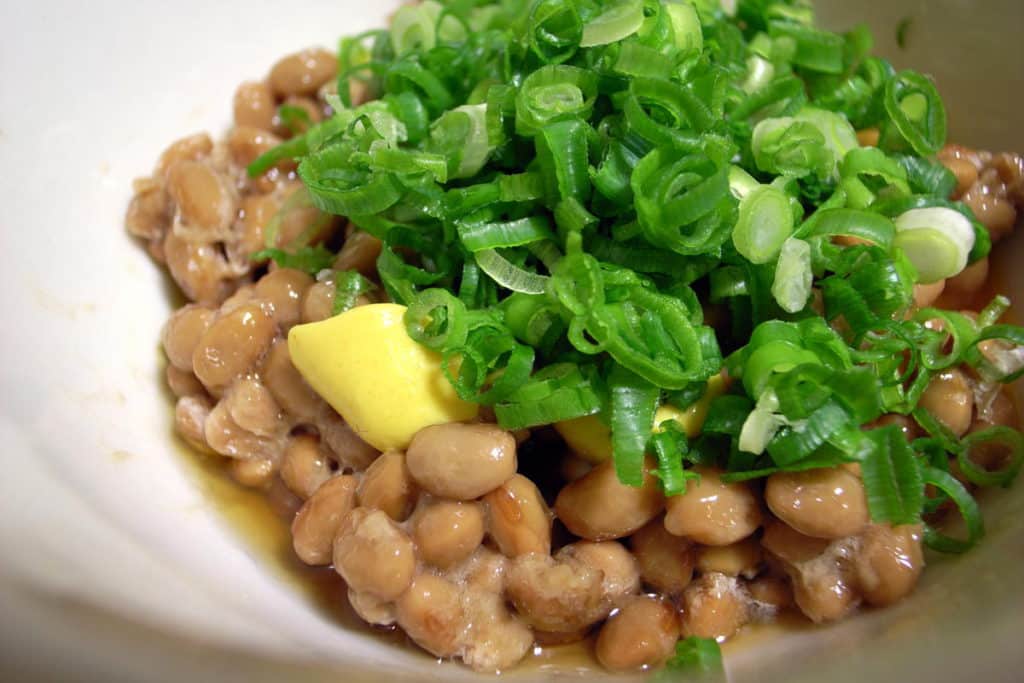

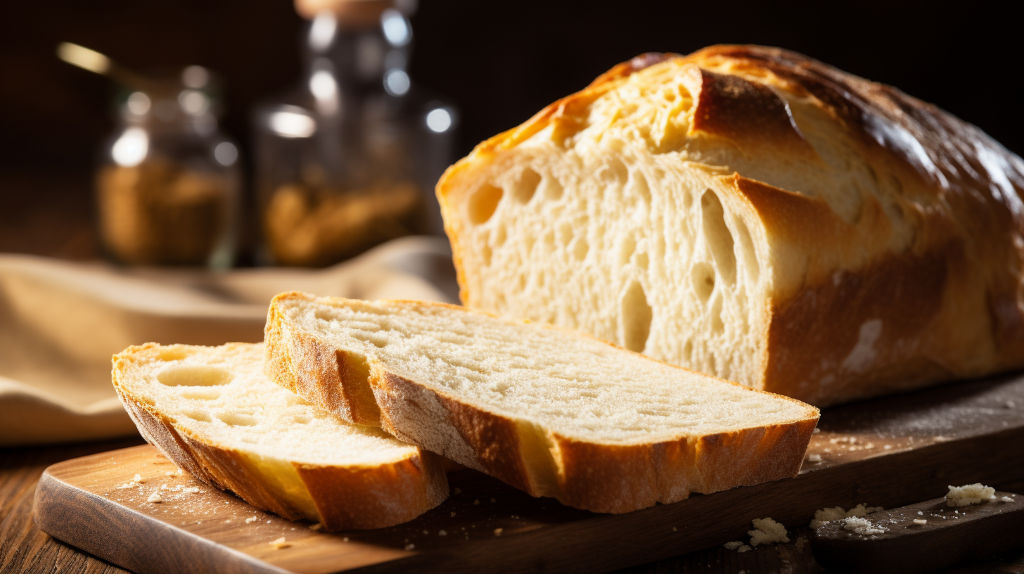
Hey thank you for writing a post on such a topic!
Posts like this provide information about a topic which people wouldn’t have otherwise known about.
Brown fat is something which I wasn’t much familiar so this was an interesting read. Brown fat I guess is quite essential, no wonder some individuals feel the cold more than others! Discovering how brown fat can have an impact on weight management is a intriguing topic which should also be further researched along with its other potential benefits.
Have a great day!
Hi Sariya,
Thank you for your kind words and interest in the post about the power of brown fat! Your observation about some people feeling the cold more than others due to varying levels of brown fat is spot on. It’s these kinds of everyday connections that make the study of brown fat so relevant and intriguing.
Thanks again for engaging with the post, and have a wonderful day too!
Warm regards,
Makhsud
I’ve been seeing cold baths videos going viral, and people talking about cyro therapy but I didn’t know that it was connected to cancer, or that there was a different type of fat call brown fat. I’m very interested in checking into this more and possible using it in my weekly routines. I grew up in a deep winter area so being cold isn’t new to me, but using it is not something I’ve considered for my health.
Hi DashDNations,
It’s great to hear that you found the connection between cold exposure, brown fat, and its potential health benefits, including cancer therapy, intriguing. The viral trend of cold baths and cryotherapy has indeed brought a lot of attention to these areas, but the underlying science, especially about brown fat, is often less discussed in mainstream conversations.
Growing up in a deep winter area, you’ve naturally adapted to the cold, which is a fascinating aspect of how our bodies can acclimate to different environments. Incorporating cold exposure into your weekly routine could be an interesting experiment, especially given your background. However, it’s important to approach this method carefully and perhaps consult with a healthcare professional, especially if you’re considering it for specific health benefits.
The research into brown fat and its potential in areas like weight management and disease therapy is still evolving. As you explore this further, you’ll find that the human body has incredible mechanisms for adapting to and benefiting from various environmental factors. If you decide to incorporate this into your routine, I’d love to hear about your experiences and any observations you make!
Thanks for your insightful comment, and stay warm (or cold, as the case may be)!
Warm regards,
Makhsud
Hello Max,
It is fascinating reading about the potential therapeutic applications of brown fat activation, especially in the context of cancer treatment. It sounds quite promising and it something that has caught my attention.
As we consider the promising aspects of brown fat activation, particularly in cancer suppression, it raises an essential question. How can we tailor these approaches for individuals with specific health conditions or those at different life stages?
I look forward to you response!
Hi Starlight,
Thank you for your thoughtful comment and the excellent question! The potential therapeutic applications of brown fat, particularly in cancer treatment, are indeed promising.
Tailoring brown fat activation approaches for individuals with specific health conditions or at different life stages is a complex but vital aspect of this research. One of the key considerations is the varying metabolic rates and brown fat activity across different ages and health statuses. For instance, brown fat is more active in younger individuals and tends to decrease with age. This variation means that strategies effective in one demographic may not be as effective in another.
For those with specific health conditions, the approach must be even more personalized. The interaction between brown fat activation and the condition in question, along with any medications being taken, must be carefully considered. For example, individuals with certain cardiovascular conditions may need to approach cold exposure therapies with caution.
Moreover, ongoing research is exploring ways to pharmacologically activate brown fat, which could offer more controlled and tailored approaches than environmental exposure. This could be particularly beneficial for individuals who are unable to tolerate cold temperatures due to other health concerns.
Thank you for your interest in this topic!
Warm regards,
Makhsud
Hey Max,
This is a very intriguing and informative post! You have revealed the surprising power of brown fat and how it can be activated by cold showers and other methods. You have also explained how brown fat can help prevent and treat prostate cancer and other diseases.
I was amazed by how you described the difference between white fat and brown fat and how they affect the body’s metabolism and energy. You have also shown some scientific evidence and studies that support the benefits of brown fat for health and longevity.
I think that this post is very valuable for anyone who wants to learn more about the potential of brown fat and how to increase it naturally. I think that it is important to be aware of the role of brown fat in the body and how it can help fight cancer and other illnesses. I believe that this post can inspire people to try cold showers and other ways to activate their brown fat and improve their well-being.
Thank you for sharing your research and knowledge with us. You have increased my interest and curiosity about brown fat and its functions. I look forward to reading more of your posts and learning from your Healthy Prostate.
Keep up the good work!
Marios
Hi Marios,
Thank you so much for your enthusiastic response to the post on brown fat! Your interest in the potential health benefits of brown fat, especially in the context of cancer prevention and treatment, highlights the growing curiosity and importance of this area in medical research. I’m glad that the scientific evidence and studies mentioned in the post added value to your understanding.
I’m grateful for your kind words and enthusiasm about the topic. Your engagement and feedback are greatly appreciated!
Warm regards,
Makhsud
It looks like brown fat is the way to go, whether or not you are sick. Just reading all the benefits of having brown fat is enough to say that it is in all our interests to get some more of this type of fat.
I live in an extremely hot country, so I probably have very little of this type of fat. Besides submerging yourself in ice daily and taking cold showers which is something a lot of people would battle with, what is the next easiest way to build up your brown fat supplies?
Hi Michel,
You’ve touched on an interesting aspect of the conversation about brown fat – its universal benefits, not just for those who are ill, but for overall health and wellness. While activities like regular exercise, dietary adjustments, and thermogenic foods are beneficial for overall metabolic health, there is no direct proof that they can promote to increasing brown fat deposition.
Thank you for your insightful question.
Warm regards,
Makhsud
Hi
Your article has a lot of life saving information and therefore very empowering. As a person myself who is dealing with prostate cancer this information offers yet another empowering method that one can follow in the fight against this cancer. The best thing about it, is that it does not cost an extra cent. To the contrary its going to save me money in saving on electricity for not using warm water.
Thank so much for this article
Richard
Hi Richard,
Thank you for your heartfelt response to the article. Your view on the cost-effectiveness of this method is an excellent point. It’s encouraging to think that something as simple as cold showers, aside from their potential health benefits, can also be a practical way to reduce expenses.
Please remember, while these methods can be beneficial, they should complement, not replace, the guidance and treatment plan provided by your healthcare professionals. It’s always important to consult with them about any new approaches you’re considering.
Thank you again for sharing your thoughts and experience.
Warm regards,
Makhsud
Hi Max,
This is a great article. I never heard of brown fat before but now I have something to discus with my integrative doctor. I read the part about using fennel essential oil to boost brown fat, my questions? Are there certain foods that can help contribute to the accumulation of brown fat in the body. As someone who has a hypo-active thyroid cold showers can be tough although I am trying.
Look forward to your recommendations.
Bernard
Hi Bernard,
Thank you for your comment and for bringing up a great question about foods that contribute to the accumulation of brown fat. While cold showers can be challenging, especially for those with a hypo-active thyroid, incorporating certain foods into your diet may offer an alternative approach.
Research indicates that some foods may help stimulate brown fat or convert white fat to brown-like fat, thereby potentially aiding in weight management. Here are a few foods that have been identified:
Capsaicin, found in hot peppers, is known to increase fat-burning and energy expenditure and may stimulate brown fat.
Green tea, particularly its catechin content, along with caffeine, may help increase fat burning. Some studies suggest it can increase brown fat, though further research is needed to confirm this.
Curcumin, found in turmeric, has shown promise in studies for its ability to enhance calorie expense, thermogenesis, and increase brown fat. However, it’s important to note that these studies often used high doses of curcumin.
Long-term use of menthol has been shown to increase metabolically active brown fat.
Omega-3 fatty acids, especially those from fish like salmon, have been shown to support weight loss efforts and may increase the protein in brown fat.
Additionally, some studies have mentioned other foods like perilla oil, Kuszu, holy basil, white Korean ginseng, Amur cork bark, propolis, quercetin, and Oleuropein as potential stimulators of brown fat. However, it’s important to approach these findings with caution as more research is needed, especially in humans. Also, consult with your integrative doctor before making significant changes to your diet or trying supplements, as they can advise you based on your specific health needs and conditions.
Hope this information is helpful, and I wish you the best in your health journey.
Warm regards,
Max
Thanks for the great suggestions. I take some of the supplements you mentioned, and I will discuss the other with my doctor.
thx
Bernard
Hi Bernard,
I’m glad you found the suggestions helpful! It’s great to hear that you’re already incorporating some of these supplements and are planning to discuss others with your doctor. I wanted to let you know that I’m currently preparing a new post specifically on alternative ways to activate brown fat. This topic has garnered a lot of interest from many visitors to my blog, just like you. The upcoming post will provide more evidence-based information, which should be particularly useful if you decide to give these methods a try. Keep an eye out on the blog – the post will be ready soon!
Thanks for your engagement and interest in this topic.
Warm regards,
Makhsud
This is fascinating, because I’ve been an advocate of cold showers for years. I miss taking them, because I moved into a new place with a shower that has only one knob (if I want it cold, flow is just a trickle). I’ve been hearing for years about the other benefits regarding testosterone, weight management, boosted immunity, etc… It’s unfortunate that so many people are cold-averse that those benefits aren’t enough to get everyone onboard. Hopefully word gets out about this, because it’s clearly a life-saver in more ways than once thought. As bad as the cancer situation is, this could prevent countless deaths. Thank you so much for putting this out there. I will definitely be sharing it!
Mark
Hi Mark,
It’s wonderful to hear from a fellow cold shower enthusiast! Your experience and advocacy for the benefits of cold showers are truly commendable.
You’ve touched on some important points about the wide-ranging benefits of cold showers, from testosterone levels and weight management to boosted immunity. It’s true that the aversion to cold can be a significant barrier for many, but, as you mentioned, spreading awareness about these benefits is key. The potential impact on cancer prevention and overall health is too significant to overlook.
Thank you for your enthusiasm and for sharing the information. It’s advocates like you who help bring such important health practices to the forefront. Hopefully, your story and advocacy will inspire others to give cold showers a try and reap the benefits, despite the initial discomfort. Keep an eye out for more posts and updates on this topic – there’s always more to explore and share!
Warm regards,
Makhsud
Wow, what an article! As soon as I started reading, I was blown away by how a simple thing like a cold environment could help with such a huge problem like cancer. This could help a lot of people! I never knew that brown fat existed. Usually I take warm showers, I rarely shower with cold water, now I think that I am going to change that and look into brown fat as means of prevention of cancer and glucose intolerance and diabetes.
Study that you write about by Xu et al. (2023) is really mind-blowing. I am an attorney, so I didn’t know how this all works, but you explained it so that I can understand it. And I learned a new word: gluttons 🙂
Thanks for the beginners guide for activating this super-power, I am going to try this!
I have two questions: I have normal weight, would I lose weight if I practiced cold showers daily? How do I measure the temperature of water, and what is too cold, and what is not effective?
Such an amazing article, I will share with family and friends, because people need to know about this!
Keep up the great work!
Hi Marko,
I’m pleased to hear that you found the article on brown fat and its potential role in cancer prevention and glucose intolerance insightful! Regarding your questions, cold showers may contribute to weight management, but they are unlikely to cause weight loss for individuals with normal weight. The primary mechanism behind any potential weight loss is the activation of brown fat, which increases energy costs. However, this effect is usually modest.
Measuring the water temperature can be done with a basic waterproof thermometer. As for the ideal temperature, it varies by individual tolerance. A shower temperature of around 68°F (20°C) can start activating brown fat. It’s important to start gradually and listen to your body to avoid shock or discomfort.
I’m glad you’re excited to share this information with your family and friends.
Keep exploring and stay healthy!
Warm regards,
Makhsud
Great article on the remarkable power of brown fat. It’s fascinating to learn how this unique type of fat can help us burn calories and potentially improve our health in various ways. The idea that activating brown fat might aid in weight loss, diabetes management, and even cancer therapy is truly groundbreaking.
I appreciate the information on how cold showers and specific exercises can stimulate brown fat activity. It certainly highlights the potential for utilizing these methods for better health. However, I’m curious to know more about the long-term effects of activating brown fat. Have there been any studies conducted on the sustainability and safety of these approaches? How can individuals incorporate brown fat activation into their daily routines without any adverse effects?
Once again, great article! I look forward to gaining more insights into this emerging field and discovering how we can tap into the incredible power of brown fat for improved well-being.
Hi Ronald,
Thank you for your response. Regarding long-term studies, research in this area is still evolving. While initial findings are promising, especially regarding calorie burning and potential health benefits, comprehensive studies on the long-term effects and safety are still underway. Most current research supports the idea that moderate and regular exposure to cold, like cold showers, can be beneficial and safe for most people. However, as with any health intervention, it’s essential to consider individual health conditions and consult with healthcare professionals.
Incorporating brown fat activation into daily routines can start with manageable and safe practices, like gradually lowering the temperature of showers or spending short periods in cooler environments. It’s about finding a balance that is both effective and comfortable for your lifestyle.
Stay tuned for more updates as research continues in this field!
Warm regards,
Makhsud
I always find it interesting that we continue to find simple and logical answers to today’s health issues by studying our ancestors. I actually have never heard of brown fat, I found this blog by searching for another related health concern, glucose. Your examples of taking cold showers makes me wonder if my uncle was really onto something, he only took cold showers, well he claimed he only took cold showers. And he worked outdoors in construction and was rarely sick.
Hi Scott,
It’s fascinating, isn’t it? The way we often circle back to simpler, more natural methods used by our ancestors for today’s health solutions. Your discovery of brown fat and its link to glucose regulation is a great example of this. It sounds like your uncle has been ahead of his time with his cold shower routine! His outdoor work and rare illnesses could indeed be tied to the benefits of cold exposure and brown fat activation. While individual experiences vary, these practices are gaining scientific backing for their health benefits, including potentially boosting immunity. It’s always interesting to see how old habits and lifestyles can inform our current understanding of health and wellness.
Thanks for sharing your thoughts and your uncle’s experience.
Warm regards,
Makhsud
Fantastic article. I have seen the benefits of cold showers personally but I had not idea of the science behind it.
Learning about all the other benefits has been eye-opening to say the least. Thank you for this!
Also, it was a great read. The content you shared was not only engaging, and informative, it was relatable – kudos!
Jake
Hi Jake,
Thank you so much for your enthusiastic feedback on the article! I’m glad to hear that you’ve experienced the benefits of cold showers firsthand and found the scientific insights behind them enlightening. It’s always great to know when the content resonates with readers on both an informative and relatable level.
Your appreciation really encourages the continued exploration and sharing of such fascinating health topics. Stay tuned for more articles where we delve into the science behind everyday practices and their impact on our well-being.
Warm regards,
Makhsud
I have heard a lot about the benefits of taking cold showers, and even ice baths, but never realised that it could help us against a fight to beat cancer. And to discover that brown fat plays a crucial role in this, is very interesting. Using cold exposure to turn on the activation of brown fat, is indeed remarkable, as found in the study by Seki et al. (2022).
I have been taking a cold shower every morning, after my hot shower. But should I only shower in cold water? Is cryotherapy the same as an ice bath? Or is an ice bath not as cold as the -110 degrees Celcius that you mention for cryotherapy?
Thank you for sharing this very helpful guide.
Hi LineCowley,
Thank you for stopping by and commenting. Regarding your questions, I’d say cryotherapy and ice baths are both methods used to expose the body to cold temperatures, but they differ in their approach and temperature levels.
Cryotherapy typically involves exposing the body to very cold air (around -110°C to -140°C) for a short duration, usually a few minutes. This is done in a controlled environment, often a cryotherapy chamber. The extreme cold in cryotherapy is aimed at triggering a rapid cooling of the skin’s surface.
On the other hand, cold baths involve immersing the body in cold water, usually around 10°C to 20°C, for 10 to 20 minutes.
Regarding your routine of taking a cold shower after a hot one, this is a common practice known as contrast therapy, personelly I love switching hot-cold too. It also stimulate the body’s BAT, so you have not to switch to only cold showers to get the theraputic effect.
Both cryotherapy and ice baths can potentially activate brown fat, though their different temperature levels and exposure times have varying effects on the body. The primary goal of these practices in the context of brown fat activation is to expose the body to cold enough temperatures to stimulate a physiological response.
Thank you for your interest, and I’m glad you found the guide helpful!
Warm regards,
Makhsud
It’s nice to see that you are a fan of Andrew Huberman. I have been challenging myself and improving my health by taking 5-minute cold showers since last December.
It wasn’t easy at first, especially in the winter, but over time my body adapted. I enjoyed reading your post and learned something new – that an increase in brown fat can help fight cancer. Do you do cold therapy often? If so, how many times a week and for how long each session?
It’s wonderful to connect with someone else who appreciates the benefits of cold therapy! Like you, I’ve been incorporating cold therapy into my routine for years, initially through alternating hot and cold showers for about 5-6 minutes. I do it almost every day. Recently, after learning more about the health benefits of brown fat and its activation through cold exposure, I’ve started a sort of local ice treatment. Unfortunately, not everyone can afford an ice-filled tub every day. This involves icing my head and front side of the body, typically for 15-20 minutes, 2-3 times a week. I use for this ice cubes made in the freezer. I’ve been noticing some fascinating results from this more targeted approach. It’s exciting to see how these small changes can have a significant impact on our well-being!
Keep up the great work on your health journey!
Best regards,
Makhsud